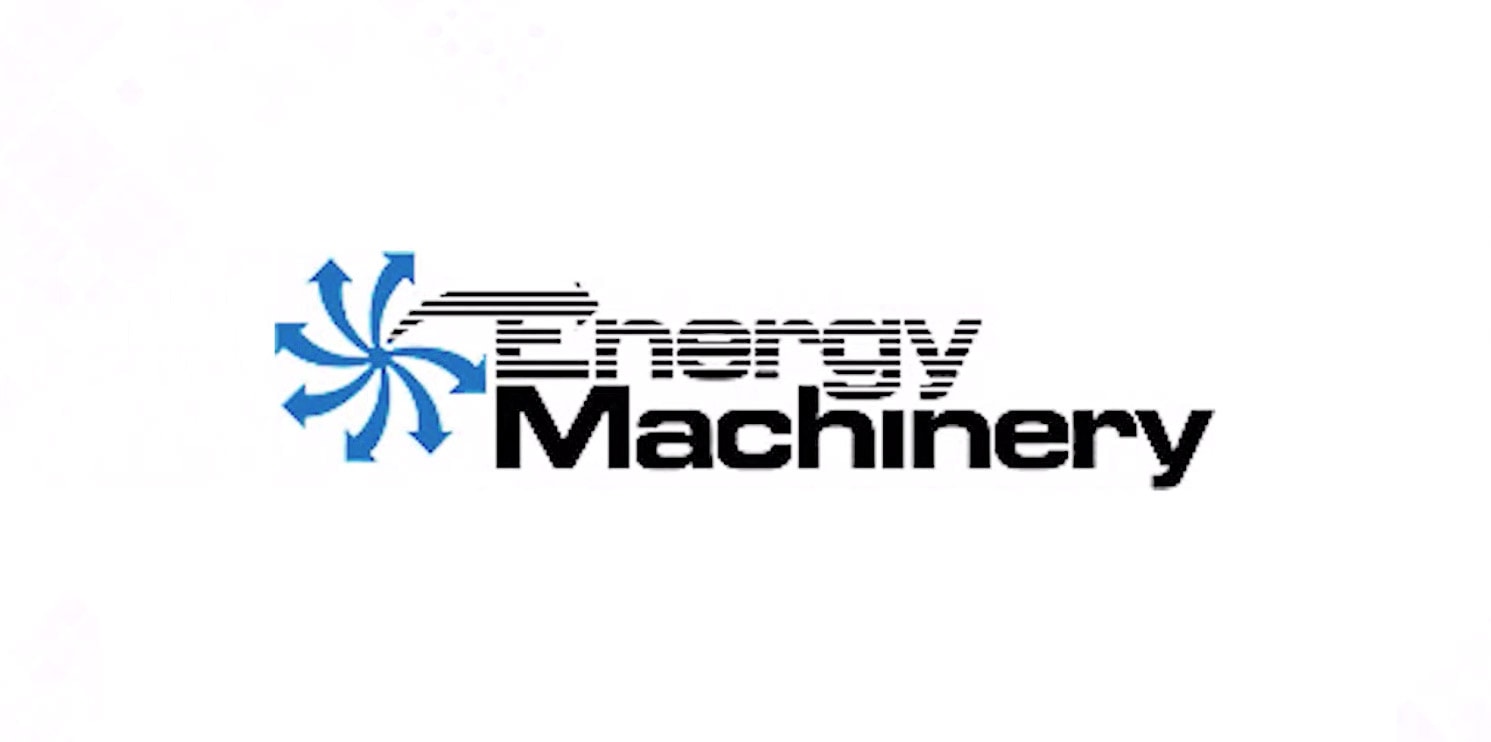Industrial air compressors are widely used in manufacturing, medical and electronic device assembly, HVAC systems, pneumatic tools and equipment, food and beverage processing, and many other industries. This versatility comes with the challenge of controlling potentially damaging moisture. Air naturally contains water vapor, and as air is drawn into a compressor, heat and pressure cause the vapor to condense into liquid droplets. These droplets can travel through tubing, hoses, and ductwork and cause corrosion in the air compression system and in tools, cylinders, or motors downstream. Liquid can also damage or degrade assemblies and finished products.
Energy Machinery specializes in solving this ongoing problem with high-quality refrigerated air dryers. Learn how they work and the range of options we offer.
How Does a Refrigerated Air Dryer Work?
A refrigerated air dryer sits between an air compressor and downstream equipment. It takes in the newly compressed air and uses a heat exchanger to cool it, generally to the temperature at which water vapor in the air condenses into liquid water. A refrigeration compressor circulates refrigerant through the system to control the air temperature. Then a moisture separator collects and drains the water away. The water is usually also passed through a special filter to remove any oil so it is not discharged with the wastewater. The outgoing air is now sufficiently dry for use in the tools, equipment, and other processes downstream without causing moisture-related damage.
The dryer’s capacity is the amount of compressed air it can handle. This is often measured in standard cubic feet per minute (scfm); however, this may differ from the amount of compressed air it can handle under the actual operating conditions, which is called its actual cubic feet per minute (acfm). This is affected by things including ambient temperature and pressure, relative humidity, and dryer intake temperature.
Types of Refrigerated Air Dryers
There are two primary types of refrigerated air dryers:
- Cycling Refrigerated Air Dryers. These turn on and off based on the demand for compressed air. They are generally energy efficient and well-suited to facilities in which the need for compressed air fluctuates.
- Non-Cycling Refrigerated Air Dryers. These dryers run continuously and use more energy than cycling models. They are a good choice when there is a consistent demand for compressed air.
Learn more about these in our blog post on Cycling Vs. Non-Cycling Air Dryers.
Refrigerated Air Dryers for Any Setting
At Energy Machinery, we provide a variety of types and sizes of refrigerated air dryers from Hankison, a leader in moisture control solutions. These high-performance dryers are built to meet the needs of various applications, ensuring reliable, energy-efficient operation and robust moisture control. From small workshops to large industrial facilities, we have a dryer to meet your needs, including:
- HPR Series. These non-cycling refrigerated air dryers range in capacity from 5 to 500 scfm and supply consistent air-drying performance with minimal maintenance.
- HPRplus Series ColdWaveTM. Advanced non-cycling dryers can handle capacities from 100 to 3,000 scfm. These units are designed for energy efficiency and superior moisture removal.
- HV Series & HES Series. High-volume refrigerated air dryers have capacities from 4,000 to 20,000 scfm and are designed for industrial and large-scale operations.
- HPET Series. Engineered to maintain a stable dew point of 38 °F (3 °C), these dryers deliver consistent air quality for precision applications.
- HPR and HPRN Value Series. These cost-effective and reliable refrigerated compressed air dryers offer dependable performance at a lower price point.
- Hankison High Inlet Temperature (HIT) Refrigerated Dryers. Designed to handle air temperatures up to 180 °F (82 °C), these dryers are a perfect fit for high-temperature applications.






Explore our entire catalog of refrigerated air dryers to find the solution that best fits your operational requirements.
How to Size a Refrigerated Air Dryer
Refrigerated compressed air dryers are not one-size-fits-all. It’s critical to select a model that can handle the conditions and compressed air demands in your facility. These are the primary considerations for sizing a dryer:
- Select an Appropriate Capacity. Consider the dryer’s capacity in both scfm and acfm. A dryer should be rated for an scfm at least as high as that of the air compressor it works with. Remember that several factors can reduce the capacity of the dryer, and that scfm may not accurately reflect operating conditions in your facility (i.e., inlet temperature and pressure, intake temperature, relative humidity). Ideally, you should select a dryer with an acfm that most closely corresponds to the air compressor’s output during the most demanding conditions. This avoids wasteful oversizing but limits running the dryer at its maximum capacity too often.
- Determine Air Quality Requirements. Consult ISO 8573-1 (ed. 2010), the international air quality standard, to identify the purity class required for your application, including moisture requirements.
- Establish Pressure Dew Point (PDP). The PDP is the temperature at which water vapor condenses into liquid at the operating pressure. Knowing this helps determine your air purity needs.
Refrigerated Air Dryers in Boston, MA
Serving the Boston and Rockland areas, Energy Machinery offers a wide selection of refrigerated compressed air dryers for any setting. We carry standard Hankison dryers and can also provide custom solutions to meet your requirements.
Our specialists have the knowledge and experience to help you select the right dryer size and features for energy-efficient, cost-effective moisture control. Contact us to learn more or request a quote for a solution tailored to your facility.







